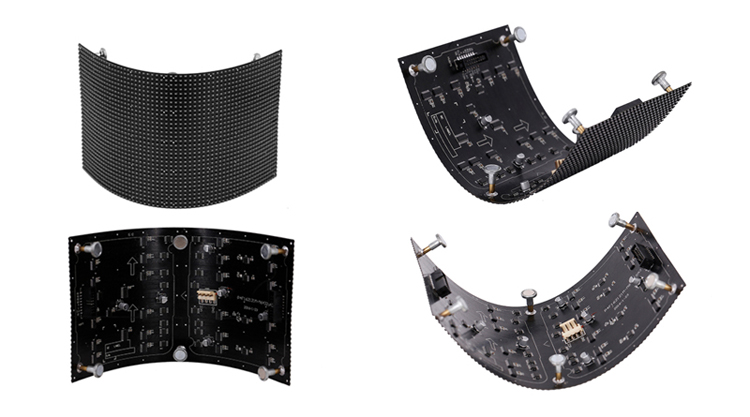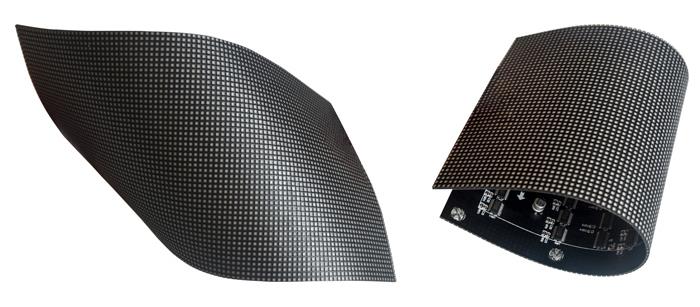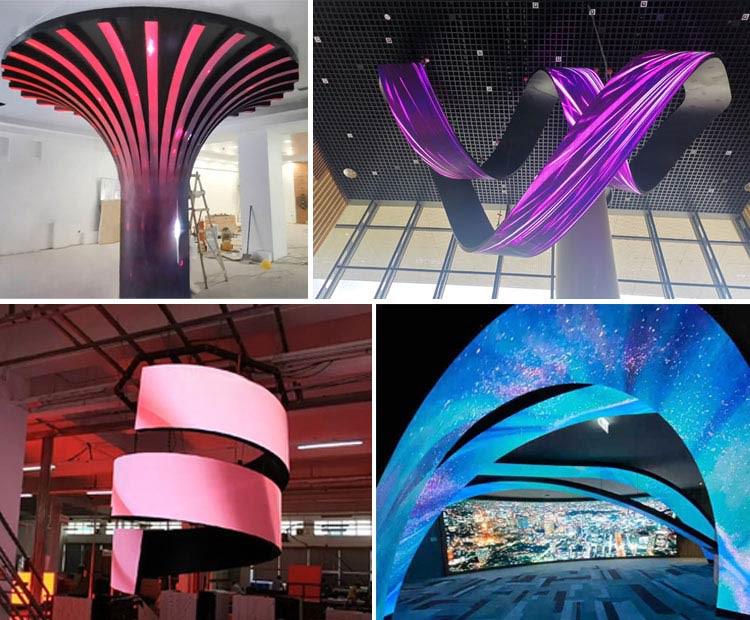Flexible LED screens are innovative variants of traditional LED displays, with bendable and deformable properties. They can be formed into various shapes, such as waves, curved surfaces, etc., according to design requirements. With this unique feature, flexible LED screens open up new areas that traditional LED display devices cannot display, and can be perfectly integrated with the architectural environment to create unique lighting effects that decorate the space.
1. Flexible LED Display Size
Screen size is one of the key considerations when choosing a flexible LED display. You must ensure that the display is large enough to cover the required viewing area, but it should not be too large to cause difficulty in installation and management.
2. Screen Shape
Flexible LED screens can be bent, folded, and take many shapes. When choosing an LED panel, determine the screen shape you need and make sure it fits your environment. Also, check if the supplier can manufacture that specific shape. Different shapes have different production difficulties and costs, so be sure to do your research before making a decision.

Pixel pitch refers to the distance between two adjacent pixels on the display. The smaller the pitch, the better the resolution and image quality of the display. This will make the image clearer and more detailed. However, smaller pixel pitches usually come with a higher price. Therefore, you need to consider your budget and the importance of image quality. Screen size and the audience's viewing distance are also crucial when determining pixel pitch and screen resolution.
4. Screen Brightness
Brightness is also an important factor when choosing a flexible LED display. Brighter displays are more legible in bright sunlight and bright environments, while darker screens are better suited for low-light locations. However, higher brightness means greater power consumption and cost.
5. Viewing Angle
When choosing a curved LED screen, a suitable viewing angle is also important. The wider the viewing angle, the more viewers can watch your content at the same time. However, if you only want to provide an immersive experience to viewers on one side of the screen (such as watching a movie or playing a game), a smaller viewing angle may be more appropriate.

6. Screen thickness
The thickness of the flexible LED wall is an important detail to pay attention to. Thin wall designs can simplify the installation and management process, take up less space, and improve the aesthetics. Conversely, thicker LED screens are more durable and more resistant to damage.
When using flexible LED screens outdoors or in humid environments, it is necessary to ensure that they have good water and dust resistance. Different screens have different adaptability to harsh climates, so it is important to check the IP rating of the LED screen. Generally speaking, the recommended IP rating for indoor use is no less than IP20, and IP65 for outdoor use is required to effectively prevent moisture intrusion and protect internal parts.
8. Screen Cooling Mechanism
Flexible screens generate a lot of heat when used for a long time, so it is necessary to ensure that their cooling system is effective and efficient to maintain the long-term performance of the display system. There are several cooling methods available today, including natural ventilation and air cooling technology, but the noise generated by air cooling technology needs to be considered and a reasonable trade-off needs to be made.
9. The Refresh Rate Of The Screen
The refresh rate refers to the number of times the LED panel updates the image per second, usually expressed in Hertz (Hz). The higher the refresh rate, the faster the image updates, which is particularly important for fast-paced images. However, high refresh rates increase energy consumption and increase manufacturing and operating costs. In contrast, lower refresh rates may cause blurry images, especially when distorted under camera surveillance. Therefore, this indicator is a factor you need to consider comprehensively.

10. The Color Level Of The Screen
Color depth refers to the number of bits per pixel that represent the color of the image. The higher the color depth, the more colors that can be displayed, resulting in a richer and more accurate visual experience. But at the same time, screens with high color depth are usually more expensive. Therefore, it is particularly important to determine what color accuracy means to you and what your budget tolerance is.
Post time: Aug-12-2024







